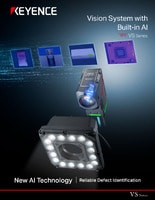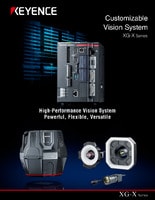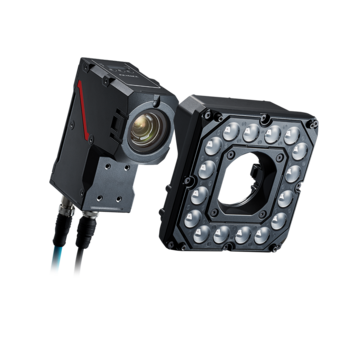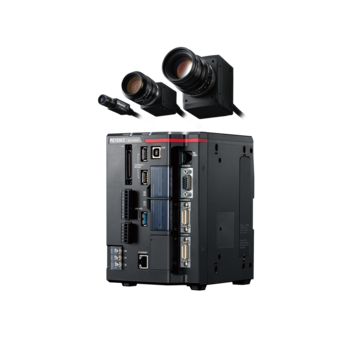Vision Systems
- Vision System with Built-in AI VS series
- Intuitive Vision System CV-X series
- Customizable Vision System XG-X series
- GigE camera and lighting for PC-based machine vision VJ series
- Inline 3D Inspection 3D Vision series
- 3D Vision-Guided Robotics 3D VGR series
- Line Scan Technology Line Scan series
- 2D Vision-Guided Robotics 2D VGR series
- LED Lighting CA-D series
- Lenses (for Machine Vision) CA-L series
- Machine Vision System Database VisionDatabase series
- Automotive
- Automation Equipment/Machine Building
- Electric Vehicles
- Medical Device Manufacturing
- Food/Beverage Packaging
- Semiconductor/Manufacturing Electronics
- Vision-Guided Robotics
- Solar
- Logistics
- Commodities
- Paper Manufacturing
- Machine Tools
- Electronic Device
- Printing
- Mining/Metals
- Fabric/Textile
- Tobacco
- Marine
- Aerospace
Glass Inspection for the Automotive Industry
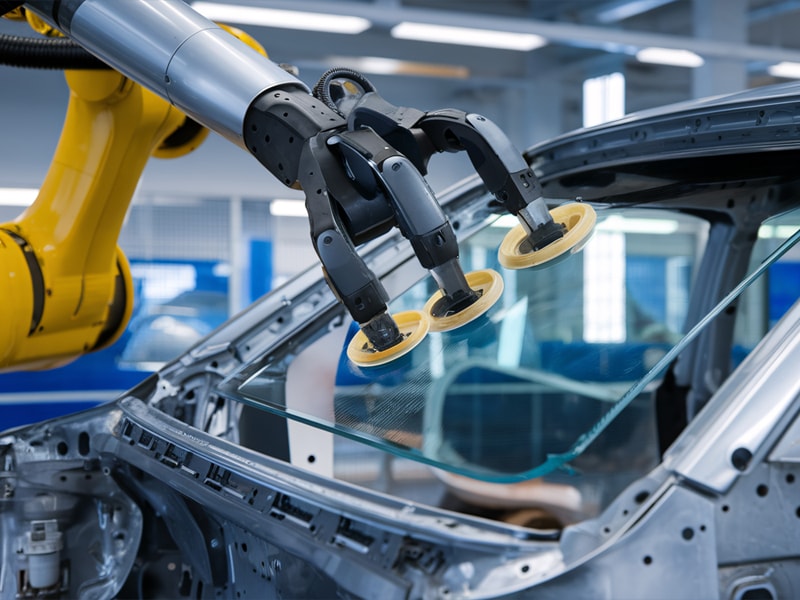
Accurate glass defect inspection helps ensure the structural integrity of windshields, guarantee visual acuity, and add to the safety of automobiles on different terrains.
With years of experience delivering solutions for manufacturers in the automotive and other industries, KEYENCE offers a wide range of vision system products built for different glass inspection applications.
We’re here to provide you with more details.
Reach out today!

Vision Systems for Glass Inspection
Windshields must be able to withstand stress and impact from sources like temperature fluctuations and potholes. These considerations mean every cut must be of the appropriate thickness and flatness. Foreign objects or impurities getting trapped in a glass or tiny defects on its surface or structure could also cause structural issues. Intuitive vision systems make inspections for defects and deviations from production standards easy.
Line Scan Cameras
The KEYENCE Line Scan Series incorporates high-resolution line scan cameras, LumiTraxTM LED lighting, and other robust features to deliver accurate glass defect inspection results on scratches, dirt, dents, and more.
Inline 3D Inspection
Inline 3D inspection solutions help even production lines moving at high speed detect all defects with precision, ensuring glass with scratches, cracks, and other deformities are discovered before reaching the final assembly line.
AI Vision Systems
Leverage AI vision systems to achieve real-time, precise defect detection and continuous defect detection capabilities. Ensure only flawless windshields and glass get to the next stage of production.
Curious about our pricing?
Click here to find out more.

Challenges in Glass Defect Inspection
Visibility
Lighting conditions and viewing angles can make a defect less visible to an inspection system. LumiTraxTM multi-angle illumination, high-dynamic-range (HDR) imaging, and other built-in features help reduce shadows, improve contrast, and highlight defects.
Defect Complexity
Vision systems setups struggle to detect and classify severe defects. AI-powered vision systems with advanced learning algorithms, high-resolution imaging, and 3D image processing units help detect defects, including bubbles, scratches, cracks, and contaminants.
False Positives and Negatives
Missed or misclassified defects cause waste. Glass inspection vision systems offer high-resolution detail capture, deliver controlled lighting, and utilize powerful image processing algorithms, ensuring defects detected are nothing else but defects.
Performance Issues
Mechanical vibrations, humidity, and lighting conditions can create performance issues. Vision systems for automotive manufacturing boast robust hardware, protective enclosures, advanced image processing algorithms, and more to compensate for threats to performance.
Discover more about this product.
Click here to book your demo.

FAQs About Glass Inspections
What Type of Glass Defects Can Vision Systems Detect?
Glass inspection equipment can detect a wide range of defects, including chips, scratches, cracks, dents, contaminants, and thickness deformities.
What Are the Benefits of Using a Line Scan Camera for Glass Inspection?
Line scan cameras in glass inspection systems provide high-resolution imaging at high speed across a large field of view with consistent illumination.
How Do Vision Systems Handle Different Lighting Conditions for Glass Inspection?
Vision systems handle varying lighting conditions using laser or LED lights, high dynamic range (HDR) cameras, and calibration functions to reduce glare and improve contrast.
How Do Glass Inspection Vision Systems Adapt to the High-Speed Production Environment in the Automotive Industry?
Our Line Scan Series excels on high-speed manufacturing lines due to its ability to quickly capture an image one line at a time.
How Do Glass Inspection Vision Systems Ensure Accuracy in Detecting Defects During the Automotive Assembly Process?
Advanced glass inspection vision systems are able to capture images, process acquired images, and provide analysis during automotive assembly.
We’re here to provide you with more details.
Reach out today!

Related Downloads
Related Products
Industries
- Automotive
- Automation Equipment/Machine Building
- Electric Vehicles
- Medical Device Manufacturing
- Food/Beverage Packaging
- Semiconductor/Manufacturing Electronics
- Vision-Guided Robotics
- Solar
- Logistics
- Commodities
- Paper Manufacturing
- Machine Tools
- Electronic Device
- Printing
- Mining/Metals
- Fabric/Textile
- Tobacco
- Marine
- Aerospace

